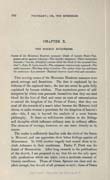
[p. 166]
CHAPTER X.
THE MORMON MURDERERS.
Causes of the Mountain Meadows massacre—Death of Apostle Pratt—Vengeance sworn against Arkansas—The wealthy emigrants—Their destruction decreed—"Let the Almighty's arrows drink the blood of the accursed Gentiles"—John D. Lee's council—The emigrants treacherously captured—The awful massacre—The long delay of justice—The author visits Lee and hears his confession—Lee arrested—National interest—Lee's trial and execution.
THE moving causes of the Mountain Meadows massacre were greed, revenge and fanaticism. The first is explained by the richness of the captured train; the last can never be quite fully explained by human wisdom. That mysterious power of self-deception by which men persuade themselves that they can shed blood for the love of God and carry on wars of extermination to extend the kingdom of the Prince of Peace; that they can steal all the rewards of a man's labor because the Hebrews held slaves, or make woman a prostitute for the kingdom of heaven's sake—this, I say, is beyond the analysis of a mere human philosophy. It bears no well-known relation to the feelings and thoughts which influence ordinary men in ordinary affairs. The element of revenge, however, we can trace directly to its source.
The reader is sufficiently familiar with the trials of the Saints in Missouri, and can appreciate their bitter feelings against all Missourians. In 1856 another tragedy had caused them to include Arkansas in their anathemas. Parley P. Pratt was the Isaiah of Mormonism. After long research in the publications of the church, I am prepared to say that his are the only apostolic productions which can claim even a moderate amount of literary excellence. Those of Orson Spencer are clear and explicit enough, but devoid of all pretense to style; those of Orson

[p. 167]
Pratt as learned and argumentative as anything in favor of such foolery could be. But the writings of Parley P. Pratt are always lucid, frequently poetic, and in a few cases border on the sublime. Being such a writer, as well as a fanatical Mormon and active missionary, he was devotedly loved by his people. On one mission he converted the wife of one Hector McLean, of Arkansas; she accompanied him to Salt Lake City, and there he married her, though he already had five wives! McLean had repudiated his wife when she left for Utah, and would probably have bothered himself but little about her; but in two or three years she returned with Pratt, on a missionary tour, abducted her children and attempted to escape with them to Utah. Then McLean resolved to have blood.
She was to meet Apostle Pratt at Fort Smith, Arkansas; there, however, he was arrested on the charge of abduction, but she assumed all responsibility, and he was cleared. He fled across the line into the Indian Nation, McLean in close pursuit. Mrs. McLean Pratt (whose account I now follow) says the people in the town turned out and cheered on her ex-husband after her acting husband, as if it had been an exciting pursuit after wild game. McLean overtook Pratt in the country, struck him from his horse with a heavy bowie-knife, inflicting a mortal wound, then shot him as he lay on the ground. McLean received something very like an ovation that evening in Fort Smith, and took the boat for New Orleans without arrest. In the South it is no crime in the people's minds to kill the invader of family honor, and this case was made peculiarly atrocious by the attempted abduction. But in Mormon eyes Pratt was a sainted martyr, and when they saw a mixed train of Arkansas and Missouri people passing through Utah, their thirst for revenge was still fierce.
The ill-fated train was rich in money and stock. There were half a dozen or more wealthy old gentlemen, with their sons, sons-in-law and their several families, including a large number of young ladies; also a few young men from Vermont, a German doctor and man of science, two lads from some Eastern city, and a son of Dr. Aden, of Kentucky. All the Missouri
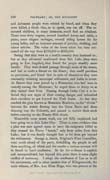
[p. 168]
and Arkansas people were related by blood, and when they were killed, a whole clan, so to speak, was cut off. The recovered children, in many instances, could find no relations. There were forty wagons, several hundred horses and cattle, a piano, some elegant carriages, several riding horses for the young ladies, and an immense amount of jewelry, clothing, and minor articles. The value of the booty taken has been estimated all the way from $150,000 to $300,000.
Seeing that they were in a hostile country they hastened on; but as they advanced southward from Salt Lake (they were going to Los Angeles), they found the people steadily more hostile. They were denied passage through some of the towns, and had to make a detour on the desert; they could purchase no provisions, and found that in spite of themselves they were constantly violating municipal ordinances, and liable to arrest. At Beaver they were joined by a Missourian who had been in custody among the Mormons: he urged them to hurry on as they valued their lives. Passing through Cedar City it is believed they saw signs of their coming danger, and redoubled their exertions to get beyond the Utah limits. At last they reached the glen known as Mountain Meadows, on the "divide" between the waters flowing into the Great Basin and those draining into the Colorado, and paused to recruit their stock before entering on the Ninety-Mile desert.
Meanwhile some secret work, not yet fully explained, had been going on in Salt Lake City. There is some evidence that a plan was once agreed upon to have the emigrants killed as they crossed the Provo "bench," only forty miles from Salt Lake; but it was finally thought best to let them get beyond the settlements. George A. Smith, Brigham's First Councillor, went south ahead of the party, forbidding the people to sell them anything, of which and the results a curious account will be found in Lee's confession. So far the evidence is explicit and uncontradicted, but beyond this point there is some slight conflict of testimony. I adopt the confession of Lee as to all his movements, and in other matters that of Klingensmith, the main witness, of Mrs. Ann Eliza Hoge, who was present at the
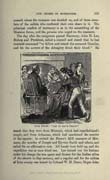
[p. 169]
council where the massacre was decided on, and of those members of the militia who confessed their own share in it. The principal conflict of testimony is as to the assembling of the Mormon forces, and the persons who urged on the massacre.
The day after the emigrants passed Harmony, John D. Lee, Bishop and President, called a council and stated that he had received command "to follow and attack the accursed Gentiles, and let the arrows of the Almighty drink their blood." He
FIVE WIVES: "LET US HAVE PEACE."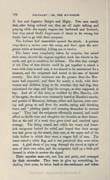
[p. 170]
D. Lee and Captains Haight and Higby. Two men testify that, after being ordered out, they sat all night talking and praying while the supply wagons ran backward and forward; that they asked God's forgiveness if about to do wrong, but finally had to go with their company.
The Indians had meanwhile opened the attack. A portion crept down a ravine near the camp, and fired upon the emigrants while at breakfast, killing ten or twelve.
The latter were completely taken by surprise, but seized their arms, shoved the wagons together, sunk the wheels in the earth, and got in condition for defence. The idea that enough of the Utes of that district could be got together to attack a train with sixty armed men, is too absurd to be entertained for a moment, and the emigrants had rested in the ease of fancied security. But their resistance was far greater than the Mormons had expected; and there for nearly a week, with their women and children lying in the trenches they had dug, they maintained the siege and kept the savages, as they supposed, at bay. And all of this time, as testified by Mrs. Hamlin, wife of the agent, the shots were constantly heard at Hamlin's ranche, and parties of Mormons, bishops, elders and laymen, were coming and going to and from the ranche, eating and drinking there, and "pitching quoits and amusing themselves in various ways." They had the emigrants effectually secured, and could afford to divide time and slaughter the Gentiles at their leisure. But at the end of a week they grew tired and resolved upon strategy. The firing ceased, and while the weary and heart-sick emigrants looked for relief, and hoped that their savage foes had given tip the attack, they saw, at the upper end of the little hollow in which they were, a wagon full of men. The latter raised a white flag, and it was perceived they were white men. A glad shout of joy rang through the corral at sight of men of their own color, and the emigrants held up a little girl dressed in white to answer the signal.
Their captains came out, met Lee and party, and arranged for their surrender. They were to give up everything, including their arms, be taken back to the settlement and taken

[p. 171]
care of, but held till the war was over. On this agreement they started on their return. There were sixty fighting men, forty women, and forty-eight children. In front were two wagons, driven by Mormons and containing the men wounded in the siege; behind them were the women and children, and lastly the men. Beside the men marched the Mormon militia in single file. Off on either side were mounted men to intercept any who might break through the lines. A hollow crosses the road there; on each side of the way as it enters the hollow are rocks and bushes where the Indians lay in ambush. As testified to by one witness, the women talked joyfully of their rescue from the Indians, and thanked God that they were under the protection of white men.
All was in readiness. As the wagons passed the gully and the women and children were just entering it, Ike Higbee, standing on the bluff above, waved his hand as a signal. Haight gave command: Halt! fire!! On the instant the Mormon militia turned, and with their guns almost touching their victims, discharged one volley, and almost every man of the emigrants fell dead. With loud screams the women and children turned and ran back toward the men. The Indians and Mormons rushed upon them, shooting, stabbing, braining, and in twenty minutes six score of Americans lay dead upon the ground, the hapless victims of Mormonism. No circumstance of horror was lacking. Indians and Mormons bit and tore the rings from the fingers and ears of the women, and with insulting yells trampled in the faces of the dying.
One girl knelt and begged a son of John D. Lee for life. He hesitated, but the father pushed him aside, and shot her through the head. Several broke through the line, but were killed by the mounted men. Two girls ran down the gully and over the ridge, to the slope where the Indian boy Albert was hid, to watch the massacre. He says that they begged him to save them, and he directed them where to hide in a thicket. The next minute John D. Lee and Bill Stewart came galloping across the hollow, and, with savage curses, ordered him to point out the runaways. He dared not disobey, and soon the girls

[p. 172]
were dragged out. Kneeling to Lee, they poured out the most passionate prayers for mercy—they would be his slaves, would never betray him, would work for him forever. While one clung to his knees he jerked her suddenly upon her back, and, placing his knee upon her breast, cut her throat from ear to ear! The other had, meanwhile, run away. He overtook her, and, by a savage blow on the back of the head with a ragged stone, crushed in her skull. Both these bodies were missed by the burying party, and, strange to say, lay there ten days untouched by the wolves. When Hamlin returned from Salt Lake City, Albert pointed them out, and they were buried. Hamlin adds that there was not the mark of a tooth on either body, and no sign of decay, so pure was the air. Their fair countenances were like those of persons just dead, and their handsome forms untouched by the beasts and birds of prey. Nature and the wild beasts of the mountain were kinder to them than men of their own race and color.
One witness, a mere lad at the time, relates that Bill Stewart walked carefully over the array of bodies, and finished with his bowie-knife those who showed any signs of life. Judge Wendell, then a Mormon, now a resident of Nevada, says he has it from unquestioned authority that all the corpses were stripped almost before they were cold, and that it was done with coarse and obscene jests. Three men had escaped the principal massacre. The night before the fatal day the emigrants drew up a paper in which they described their condition, addressed to "Masons, Odd-Fellows, Baptists, Methodists and all good people in the States;" they signed this according to classes, so many members of each church, lodge or chapter, and with it the three young men, specially chosen for fleetness of foot, crawled down the ravine and escaped. The Indians killed two the next night. The third got to the last point on the Santa Clara, where he was overtaken by Ira Hatch and a band of Indians, sent in pursuit, and murdered. Jacob Hamlin obtained the paper and kept it many years; but Lee learned of its existence, took it from him and destroyed it after administering a sharp reproof. It is also related that an old man, in the
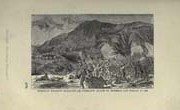
[p. 173]
MOUNTAIN MEADOWS MASSACRE—132 EMIGRANTS KILLED BY MORMONS AND INDIANS IN 1857.
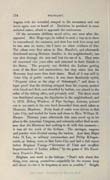
[p. 174]
wagons with the wounded, escaped to the mountains and was never again seen or heard of. Doubtless he perished in some secluded cañon, afraid to approach the settlements.
Of the seventeen children saved alive, one soon after disappeared. Mrs. Hoge says, be talked in such a way as to show he remembered the massacre, and that Lee took him away and he was seen no more; but I have no other evidence of this. The others were first taken to Mrs. Hamlin's, and afterwards distributed among Mormon families in the neighborhood; one was shot through the arm and lost the use of it. They were all recovered two years after and returned to their friends in the States. The property was divided, the Indians getting most of the flour and ammunition; but they claim that the Mormons kept more than their share. Much of it was sold in Cedar City at public auction; it was there facetiously styled, "Property taken at the siege of Sebastopol;" and there is legal proof that the clothing stripped from the corpses, spotted with blood and flesh, and shredded by bullets, was placed in the cellar of the tithing office, and privately sold. The finest stock was distributed among the dignitaries in the neighborhood; and in 1872, Bishop Windsor, of Pipe Springs, Arizona, pointed out to me cattle in his own herd descended from stock taken at Mountain Meadows. Forty head of cattle were driven to Salt Lake City, and traded for boots and shoes to Hon. William H. Hooper. Thirteen years afterwards this man stood up in his place in the American Congress, and solemnly called God to witness that the Mormons had nothing to do with this massacre—it was all the work of the Indians. The carriages, wagons, and jewelry were divided among the leaders. And then Major John D. Lee, as military commandant, and Philip Klingensmith, as bishop, went to Salt Lake City and laid a full report before Brigham Young—" Governor of Utah and ex-officio Superintendent of Indian Affairs," by the grace of His Excellency Franklin Pierce.
Brigham sent word to the bishops: "Don't talk about this thing, even among yourselves—especially let the women keep still about it—let it be forgotten as soon as possible." Haight

[p. 175]
JOHN D. LEE WARNED.
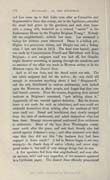
[p. 176]
and Lee came up to Salt Lake soon after as Councillor and Representative from that county, sat in the legislature, attended the usual ball given by the governor, and each went home with a young wife, bestowed as a reward, "sealed" in the Endowment House by the Prophet Brigham Young! Nobody left the neighborhood; nobody lost caste. Lee remained a bishop for thirteen years afterward. Dame is a bishop yet; Higbee is a prominent citizen, and Haight was still a bishop when I last saw him in 1872. The dead were buried; peace was made by Commissioners Powell and McCulloch with King Brigham; a new emigrant road was laid off, lest Gentiles might discover something in passing through the meadows, and no mention of the affair was made in Mormon society or in the Mormon organ, the Deseret News.
And so all was done, and the dread secret was safe. The last adult emigrant had fed the wolves; the only child old enough to remember anything about it had "disappeared," and the rest, distributed in various settlements, soon looked upon the Mormons as their people, and forgot that they ever had Gentile parents. Even the women, forgetting their natural instincts at Brigham's command, "quit talking about it." Apparently all was secured against detection. But the human heart is not made for such an inhabitant, and men could not withhold themselves from talking after the madness of 1857 wore itself out. Dazed and bewildered, they slowly emerged from the state of excitement, and asked themselves what had been done. Strange rumors spread northward from settlement to settlement. Some of the boys from Washington county came north after the peace, and met their friends who had served against Johnston's army; and often muttered over their cups that they did not like "the business they had been engaged in down south." A lad in Beaver began to act very strangely—he drank deep of native whisky, and never staggered under it; but told of very strange things that he saw.
A few apostates fled from that neighborhood, and soon after an account, brief and very imperfect, of the massacre appeared in a California paper. The Deseret News officially pronounced
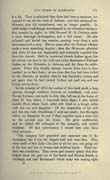
[p. 177]
it a lie. Next it admitted that there had been a massacre, but claimed it was all the work of Indians; and this continued the Mormon plea till concealment was no longer possible. In 1858 Judge Cradlebaugh investigated it, the witnesses coming to him secretly by night; in 1859 General W. H. Carleton made a more thorough investigation, and a full report. He also collected and buried the remains, erecting over them a rude monument and a cross. Eleven years after the Federal officials made a more searching inquiry; then the Mormons admitted that John D. Lee was implicated, and nominally expelled him from the church. Still he continued church Indian agent, but his retreat was now in the wild and rocky fastnesses of Pahreah Cañon, on the Colorado, in Arizona, and far from the settlements. From that locality strange rumors from time to time reached us at Salt Lake; at one time that Lee had been killed by the Danites; at another that he was hopelessly insane, and yet again that he had turned Indian out and out, and was living among them.
In the summer of 1872 the author of this book made a long journey through northern Arizona on horseback, with some Navajo Indians; and early in July they left me at the house of John D. Lee, where I remained three days; I also visited Jacob's Pool, where Lee's older wife lived in a bough cabin with her son and daughter. Of the hospitality of his wife and his own rude friendliness I need not speak; but the night before my departure he and I slept together upon a straw bed on the ground near his house. He grew confidential, and we talked till midnight of the massacre, and related incidents. Of that conversation I record here only these brief extracts:
"The company had quarreled and separated east of the mountains, but it was the biggest half that come first. They come south of Salt Lake City just as all the men was going out to the war, and lots of women and children lonely. Their conduct was scandalous. They swore and boasted openly that they helped shoot the guts out of Joe Smith and Hyrum Smith, at Carthage, and that Buchanan's whole army was coming right

[p. 178]
behind them, and would kill every G—d d—n Mormon in Utah, and make the women and children slaves, and . . . They had two bulls, which they called one 'Heber' and the other 'Brigham,' and whipped 'em thro' every town, yelling and singing, blackguarding and blaspheming oaths that would have made your hair stand on end. At Spanish Fork—it can
JACOB'S POOL AND JOHN D. LEE'S WIFE.
be proved—one of 'em stood on his wagon-tongue, and swung a pistol, and swore that he helped kill old Joe Smith, and was ready for old Brigham Young, and all sung a blackguard song, 'Oh, we've got the ropes and we'll hang old Brigham before the snow flies,' and all such stuff. Well, it was mighty hard to bear, and when they got to where the Pahvant Indians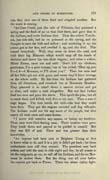
[p. 179]
was, they shot one of them dead and crippled another. But the worst is coming.
"At Corn Creek, just this side of Fillmore, they poisoned a spring and the flesh of an ox that died there, and gave that to the Indians, and some Indians died. Then the widow Tomlinson, just this side, had an ox poisoned at the spring, and she thought to save the hide and tallow; and rendering it up, the poison got in her face, and swelled it up, and she died. This roused everybody. Well, they came on down the road, and with their big Missouri whips would snap off the heads of chickens and throw 'em into their wagons; and when a widow, Missis Evans, came out and said: 'Don't kill my chickens, gentlemen, I'm a poor woman,' one of 'em yelled, 'Shut up, you G—d d—d Mormon, or I'll shoot you!' Then her sons and all her folks got out with guns, and swore they'd have revenge on the whole outfit. By this time the Indians had gathered from all directions, and overtook 'em at Mountain Meadow. They planned it to crawl down a narrow ravine and get in close, and make a rush altogether. But one fool Indian fired too soon and gave the alarm. This spoilt the plan, but all in reach fired, and killed, well, five or six men. Then a sort o' siege began. The men inside did well—the best they could have done. They got the wagons corraled and dug rifle-pits. The Indians could not hit any more of the people, but shot nearly all their oxen and some horses. . . . .
"I never will mention any names, or betray my brethren. Those men were God-fearing men. Their motives were pure. They knelt down and prayed to be guided in council But they was full of zeal. Their zeal was greater than their knowledge. . . . .
"An express had been sent to Brigham Young at first to know what to do, and it is a pity it didn't get back; for those enthusiastic men will obey counsel. The president sent back orders, and told the man to ride night and day, by all means to let the emigrants go on; to call off the Indians, and for no Mormons to molest them. But the thing was all over before the express got back to Provo. There was about eighty fight-
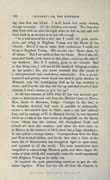
[p. 180]
ing men that was killed. I don't know how many women, though not many. All the children was saved. The little boy that lived with us cried all night when he left us, and said he'd come back to us as soon as he got old enough.
"It is told around for a fact that I could tell great confessions, and bring in Brigham Young and the Heads of the Church. But if I was to make forty confessions, I could not bring in Brigham Young. His counsel was: 'Spare them, by all means.' But I am made to bear the blame. Here I am, old, poor, and lonely, away down in this place—carrying the sins of my brethren. But if I endure, great is my reward. Bad as that thing was, I will not be the means of bringing troubles on my people; for, you know yourself, that this people is a misrepresented and cried-down community. Yes, a people scattered and peeled, whose blood was shed in great streams in Missouri, only for worshipping God as he was revealed to them; and if at the last they did rise up and shed blood of their enemies, I won't consent to give 'em up."
In the late autumn of 1874 John D. Lee was arrested, pursuant to indictment and writ from the District Court at Provo, Hon. Jacob S. Boreman, Judge. Changes in the law; to be hereafter detailed, had made it possible to occasionally secure a fair-minded jury in Utah; such a one had indicted Lee, and by strategy of U. S. Marshal Owens, he was captured while on a visit to his four wives at Panguitch on the Sevier river. Great was the interest felt throughout Utah, and indeed all over the country; and when his trial came on at Beaver, in the summer of 1875, there was a large attendance. It was indeed a strange drama. Correspondents from the East and West flocked thither, and for the first time a little of the inner life of Mormondom was brought to light in open court, and reported to all the world. The most incredulous were compelled to acknowledge Mormon guilt, and there began the series of trials which will eventually make the world acquainted with Brigham Young as he really was.
It required the most persevering exertions to get the witnesses together. When Lee was cut off from the Church, in

[p. 181]
1871, all the Mormons in one day, as it were, changed their tone and began to denounce him as the bloodiest villain of the age. In fact they were extremely anxious to have him punished—they even wanted him strung up at once. As the day of trial drew near, you might have read in all the Mormon prints savage denunciations of his crime, and pitiful plaints "that innocent and noble men should have been accused of complicity with it." When it was announced that Lee was about to turn State's evidence, the Mormon prints indulged in joyful congratulations that his statement would "completely exonerate President Young and the Heads of the Church." All this looked very strange, to say the least. And, sure enough, when Lee's statement was submitted to the District Attorney, it was easily proved to be a tissue of lies from beginning to end, as shown by abundant testimony. All the guilty, he said, were either dead or out of the Territory long ago. Not a line did it contain about any one of those in custody. It is now believed to have been a Church trick from the start. The only guilty man, according to Lee, was Klingensmith, the principal witness against him.
The prosecution was conducted by District Attorney Wm. C. Carey and R. N. Baskin, Esq., of Salt Lake City; the defense by Messrs. J. G. Sutherland, G. C. Bates, Judge Hoge (a Mormon), Wells Spicer and W. W. Bishop—the last from Pioche, Nevada, all the others from Salt Lake. The examination of jurors on the voir dire was as perfect an exhibit of Mormonism as I ever witnessed. All the Mormons called swore they had neither formed nor expressed an opinion, and knew nothing special about the case. One swore he had lived in the same town with Lee, but heard nothing about him in connection with the massacre; another that he had not heard of it at all, and another that he was reared in the neighborhood, had visited the Meadows and seen the monument, but never asked what it was for, and had never heard of a massacre there! The whole examination after this broke down from mere absurdity, and after getting three non-Mormons the prosecution gave it up and allowed the Mormons to select the rest of the jury.
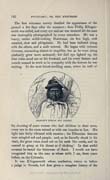
[p. 182]
The first witnesses merely detailed the appearance of the ground a few days after the massacre; then Philip Klingensmith was called, and every eye and ear was strained till the man was thoroughly photographed by every attendant. He was a heavy, rather stolid-looking Dutchman, six feet high, well muscled, slow and phlegmatic. He had been indicted along with the others, and a nolle entered. He began with extreme slowness, amounting almost to stupidity, but as he went along gradually grew more animated; his dull eye lighted up, the blue veins stood out on his forehead, and his every feature and muscle seemed to work as in sympathy with the horrors he was reciting. In the most blood-curdling scene, where he told of
HAMLIN'S INDIAN BOY ALBERT.
It was Klingensmith whose confession, sworn to before a judge in Nevada, had first given a complete history of the

[p. 183]
massacre. The defense attempted to prove the old slander, invented in 1859, to deceive Judge Cradlebaugh, that the emigrants had poisoned a spring near Corn Creek, and then that they had poisoned the flesh of an ox and given it to the Indians to eat; but broke down completely on both charges. On this point the emigrants were completely exonerated, and as to the outrageous conduct spoken of by Lee, it was afterwards shown that something of that nature was perpetrated by another company, known as the "Missouri Wildcats;" but no evidence whatever was adduced to show misconduct by the murdered party. Brigham Young professed to be unable to attend the trial, but tried very hard to get an affidavit admitted denying his complicity. Failing in that he had it published and distributed throughout the nation.
The case was fully proved, but the Mormon jurymen had been instructed by the priesthood and refused to convict. They had all sworn they knew nothing of the case; but on reaching the jury-room, they proceeded to controvert the testimony for the prosecution by facts within their own knowledge. The vote stood from first to last, nine for acquittal and three for conviction. The majority first installed the Jack-Mormon, J. C. Heister, in the chair, and then one by one delivered elaborate Mormon sermons: against the prosecuting attorneys, against the court and all Federal officials, against the emigrants, against the United States, against all who were not of the Mormon church or its most subservient tools. It was perhaps the most curious and irregular jury proceeding ever had in any civilized-country. The three Gentiles on the panel held their ground for two days, smiling grimly on their foes, and willing to see the latter commit themselves; then consented to a disagreement. A storm of rage swept over the country before which the Mormon leaders quailed at last. Brigham decided to give up Lee as he had given up the Hodges thirty years before, and all was properly fixed for the next trial.
This came on in September, 1876, before a jury all Mormons; Daniel H. Wells was present to see that all was done according to counsel; the Mormon witnesses remembered all

[p. 184]
they had forgotten before and Lee was convicted. Samuel Knight and Samuel McMurdy testified to seeing Lee kill several persons; that he blew a woman's brains out, beat one man to death with a gun, and shot others; then came to the wagons and shot all the wounded men with a pistol. At this point in the testimony Lee broke down, and when remanded to his cell walked the floor a long time, cursing the Mormon leaders who, he said, had betrayed him. He knew, even before his attorney did, that the church had decided to give him up; he had suspected this at the start, and urged his attorney to secure a few Gentiles on the jury, in the hope that they might revolt against this conspiracy. But this had proved impossible. All the Gentiles called had heard or read of the case; the Mormons called "had never heard of it, and had formed no opinion." For "model jurors" they could beat New York City.
An appeal was taken and the judgment confirmed. Judge Boreman sentenced Lee to die March 23d, 1877; according to law in Utah he had choice of the method of his own execution, and chose to be shot. Before his death Lee wrote two confessions: a short one to be published at once, and a longer one which he gave his lawyer, Hon. W. W. Bishop, to be published after Lee's death and the proceeds to pay the lawyer's fee. From the former the following extracts are of interest:
"Those with me at that time were acting under orders from the church of Jesus Christ of Latter-day Saints. The horrid deeds then committed were done as a duty which we believed we owed to God and our church. We were all sworn to secrecy before and after the massacre. The penalty for giving information concerning it was death. . . . . .
"In the month of September, 1857, the company of emigrants, known as the 'Arkansas Company,' arrived in Parowan, Iron county, Utah, on their way to California. At Parowan young Aden, one of the company, saw and recognized one William Laney, a Mormon resident of Parowan. Aden and his father had rescued Laney from an anti-Mormon mob in Tennessee several years before, and saved his life. He (Laney), at the time be was attacked by the mob, was a Mormon missionary
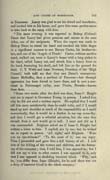
[p. 185]
in Tennessee. Laney was glad to see his friend and benefactor, and invited him to his house, and gave him some garden-sauce to take back to the camp with him.
"The same evening it was reported to Bishop (Colonel) Dame that Laney had given potatoes and onions to the man Aden, one of the emigrants. When the report was made to Bishop Dame he raised his hand and crooked his little finger in a significant manner to one Barney Carter, his brother-in-law, and one of the 'Angels of Death.' Carter, without another word, walked out, went to Laney's house with a long picket in his hand, called Laney out, and struck him a heavy blow on the head, fracturing his skull, and left him on the ground for dead. C. Y. Webb and Isaac Newman, President of the 'High Council,' both told me that they saw Dame's manoeuvres. James McGuffee, then a resident of Parowan—but through oppression has been forced to leave there, and is now a merchant in Pahranagat valley, near Pioche, Nevada—knows these facts. . . . .
"Some two weeks after the deed was done, Isaac C. Haight sent me to report to Governor Young in person. I asked him why he did not send a written report. He replied that I could tell him more satisfactorily than he could write, and if I would stand up and shoulder as much of the responsibility as I could conveniently, that it would be a feather in my cap some day, and that I would get a celestial salvation, but the man that shrunk from it now would go to hell. I went and did as I was commanded. Brigham asked me if Isaac C. Haight had written a letter to him. I replied, not by me; but he wished me to report in person. 'All right,' said Brigham. 'Were you an eye-witness?' 'To the most of it,' was my reply. Then I proceeded and gave him a full history of all. I told him of the killing of the women and children, and the betraying of the company; that, I told him, I was opposed to; but I did not say to him to what extent I was opposed to it, only that I was opposed to shedding innocent blood. 'Why,' said he, 'you differ from Isaac (Haight), for he said there was not a drop of innocent blood in the whole company.'
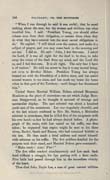
[p. 186]
"When I was through he said it was awful; that he cared nothing about the men, but the women and children was what troubled him. I said: 'President Young, you should either release men from their obligation, or sustain them when they do what they have entered into the most sacred obligations to do.' He replied: 'I will think over the matter, and make it a subject of prayer, and you may come hack in the morning and see me.' I did so. He said: 'John, I feel first-rate. I asked the Lord, if it was all right for the deed to be done, to take away the vision of the deed from my mind, and the Lord did so, and I feel first-rate. It is all right. The only fear I have is of traitors.' He told me never to lisp it to any mortal being, not even to Brother Heber. President Young has always treated me with the friendship of a father since, and has sealed several women to me since, and has made my house his home when in that part of the Territory—until danger has threatened him."
United States Marshal William Nelson selected Mountain Meadows as the place of execution—an act which Judge Boreman disapproved, as he thought it savored of revenge and spectacular display. The spot selected was about a hundred yards east of the monument. Lee was singularly cheerful, and at the last minute confessed to Rev. Mr. Stokes, a Methodist minister in attendance, that he killed five of the emigrants with his own hand—a fact he had always denied before. A photograph of the scene, with Lee seated on his coffin, was then taken; he requested that copies might be sent to his three wives, Rachel, Sarah and Emma, who had remained faithful to the last. He then made a brief address and seated himself with calmness on his coffin. The five soldiers detailed for the purpose took their stand, and Marshal Nelson gave command:
"Make ready! Aim! Fire!"
The five rifles cracked simultaneously and Lee sank back dead without a struggle, his lips parting with a faint smile. Five balls had passed through him in the immediate vicinity of the heart.
Thus died John Doyle Lee, a man of great natural abilities
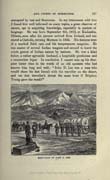
[p. 187]
corrupted by lust and fanaticism. In my intercourse with him I found him well informed on many topics, a great observer of nature, apt in acquiring knowledge, especially in matters of language. He was born September 6th, 1812, at Kaskaskia, Illinois, soon after his parents arrived from Ireland, and was reared a Catholic, turning Mormon in 1836. His features were of a marked Irish cast, and his temperament sanguine. He was master of several Indian tongues and seemed to know the whole gamut of Indian nature by instinct. He was a kind father, a rather agreeable husband, a hospitable gentleman and a remorseless bigot. In conclusion I cannot sum up his character better than in the words of an old apostate who had known him long and well: "John D. Lee was a man who would share his last biscuit with the traveller on the desert, and cut that traveller's throat the same hour if Brigham Young gave the word!"
EXECUTION OF JOHN D. LEE.